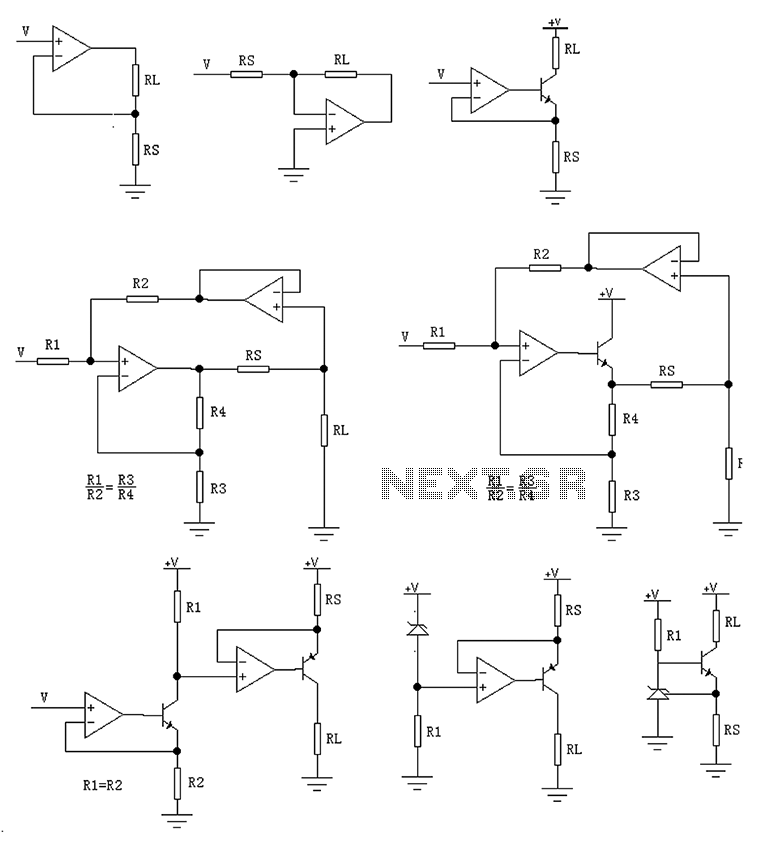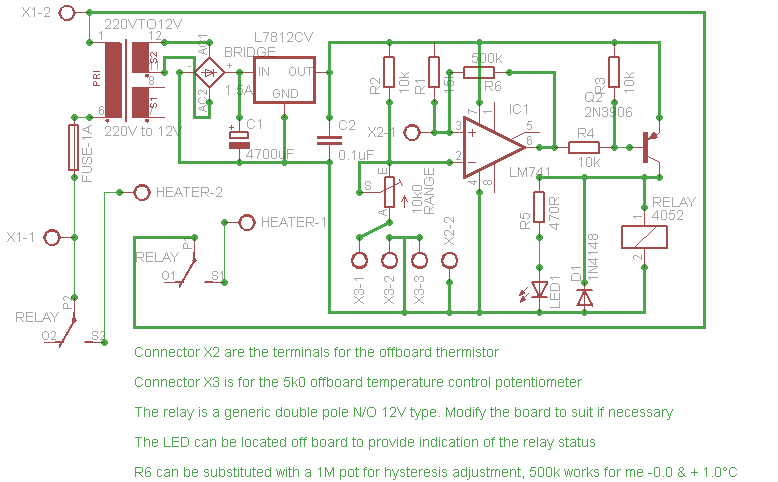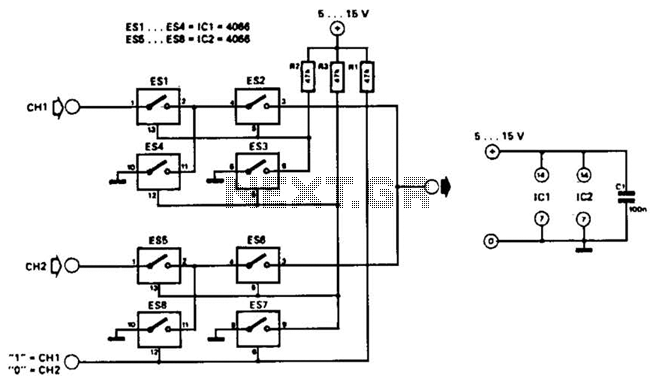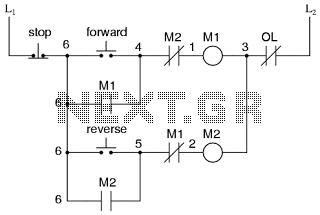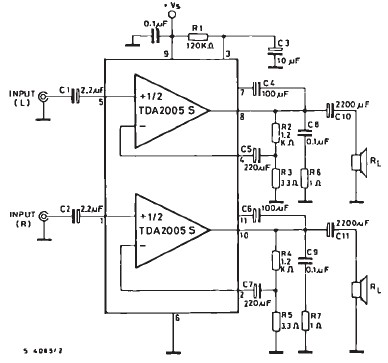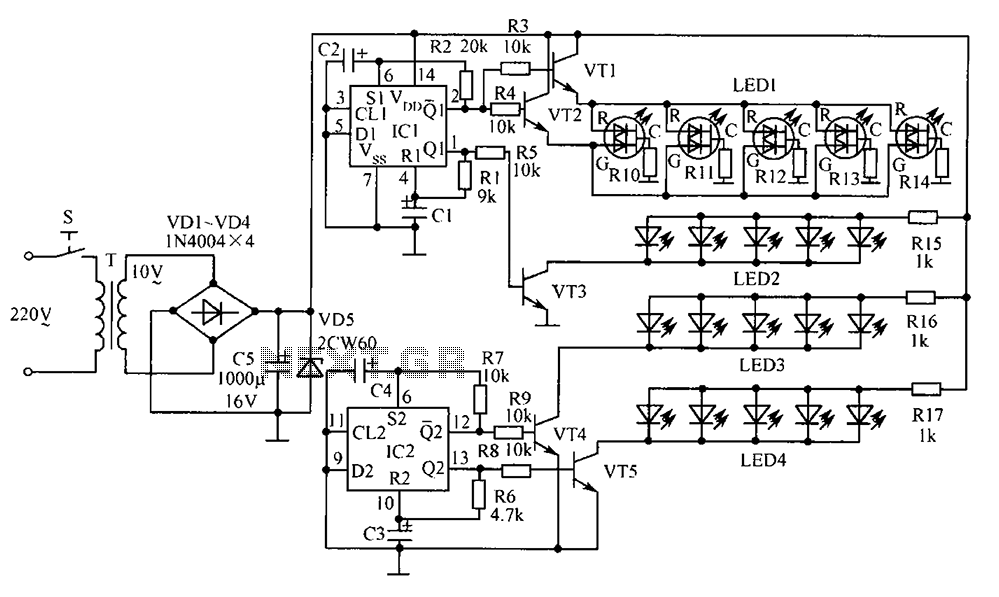
25 watt audio amplifier circuit
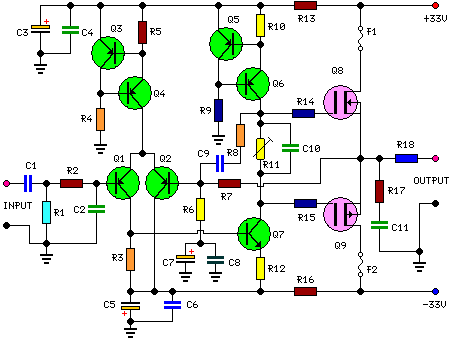
This is a 25-watt basic power amplifier designed for ease of construction at a reasonable cost. It offers superior performance compared to standard STK module amplifiers commonly found in most mass-market stereo receivers produced today.
The 25-watt basic power amplifier circuit is engineered to deliver reliable audio amplification while remaining cost-effective and straightforward to assemble. The design typically utilizes a complementary push-pull output stage, which enhances efficiency and linearity. The amplifier is capable of driving standard speakers with an impedance of 4 to 8 ohms, making it suitable for various audio applications.
Key components in the circuit include transistors, resistors, capacitors, and a power supply unit. The input stage often employs a differential amplifier configuration to improve signal integrity and reduce distortion. Feedback is implemented to stabilize gain and enhance bandwidth, ensuring that the amplifier maintains consistent performance across the audio spectrum.
The power supply circuit is essential for providing the necessary voltage and current to drive the output stage. It usually consists of a transformer, rectifier, and filter capacitors, which convert AC mains voltage into a stable DC supply. Proper filtering is crucial to minimize ripple voltage, which can adversely affect audio quality.
Thermal management is another critical aspect of the design. Heat sinks are typically attached to the output transistors to dissipate heat generated during operation, preventing thermal runaway and ensuring long-term reliability.
In summary, this 25-watt power amplifier circuit strikes a balance between performance, simplicity, and cost, making it an attractive option for hobbyists and those looking to build their own audio amplification solutions.This is a 25 Watt basic power amp that was designed to be (relatively) easy to build at a reasonable cost. It has better performance than the standard STK module amps that are used in practically every mass market stereo receiver manufactured today..
🔗 External reference
The 25-watt basic power amplifier circuit is engineered to deliver reliable audio amplification while remaining cost-effective and straightforward to assemble. The design typically utilizes a complementary push-pull output stage, which enhances efficiency and linearity. The amplifier is capable of driving standard speakers with an impedance of 4 to 8 ohms, making it suitable for various audio applications.
Key components in the circuit include transistors, resistors, capacitors, and a power supply unit. The input stage often employs a differential amplifier configuration to improve signal integrity and reduce distortion. Feedback is implemented to stabilize gain and enhance bandwidth, ensuring that the amplifier maintains consistent performance across the audio spectrum.
The power supply circuit is essential for providing the necessary voltage and current to drive the output stage. It usually consists of a transformer, rectifier, and filter capacitors, which convert AC mains voltage into a stable DC supply. Proper filtering is crucial to minimize ripple voltage, which can adversely affect audio quality.
Thermal management is another critical aspect of the design. Heat sinks are typically attached to the output transistors to dissipate heat generated during operation, preventing thermal runaway and ensuring long-term reliability.
In summary, this 25-watt power amplifier circuit strikes a balance between performance, simplicity, and cost, making it an attractive option for hobbyists and those looking to build their own audio amplification solutions.This is a 25 Watt basic power amp that was designed to be (relatively) easy to build at a reasonable cost. It has better performance than the standard STK module amps that are used in practically every mass market stereo receiver manufactured today..
🔗 External reference
